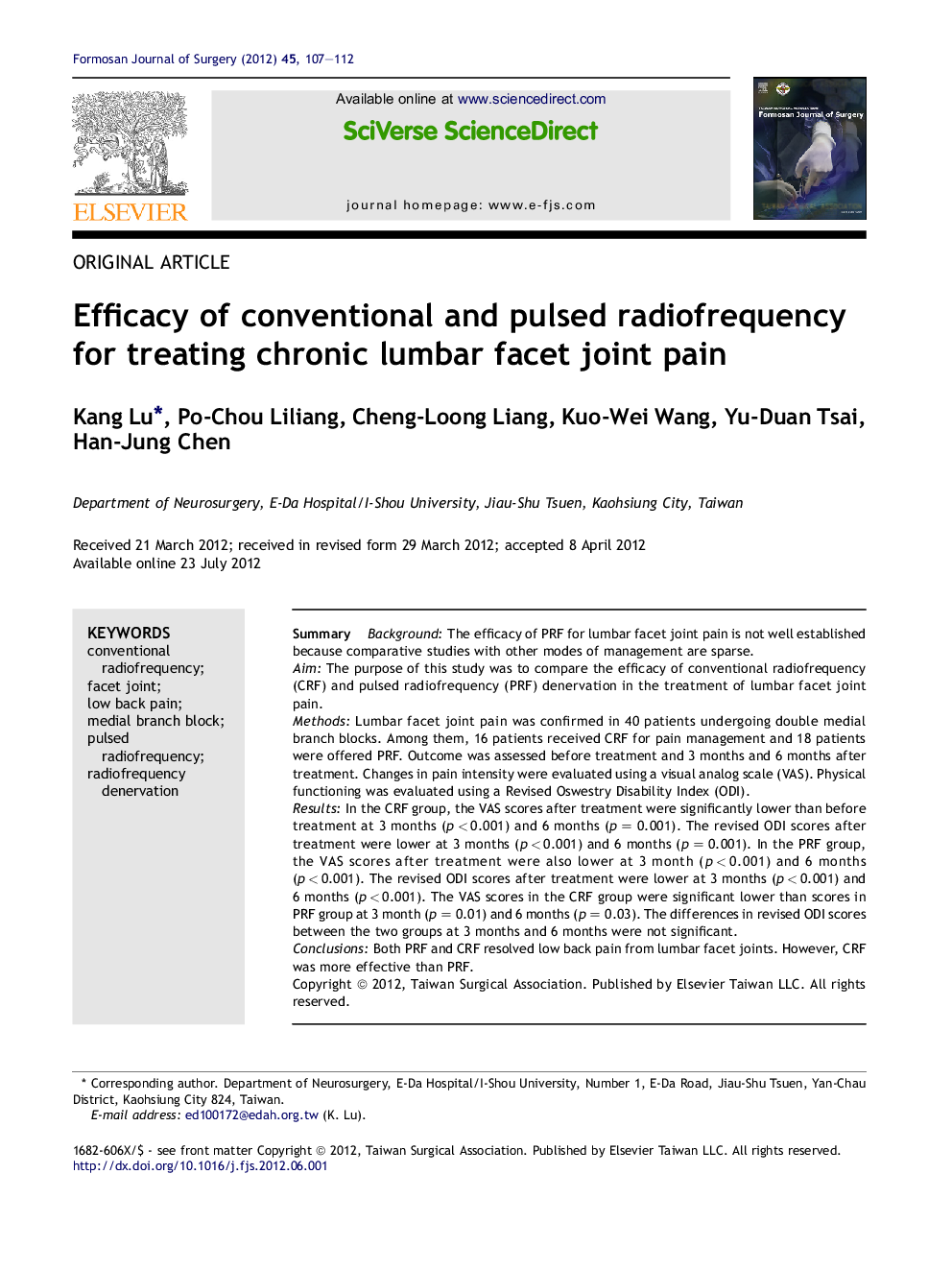| Article ID | Journal | Published Year | Pages | File Type |
|---|---|---|---|---|
| 4285057 | Formosan Journal of Surgery | 2012 | 6 Pages |
SummaryBackgroundThe efficacy of PRF for lumbar facet joint pain is not well established because comparative studies with other modes of management are sparse.AimThe purpose of this study was to compare the efficacy of conventional radiofrequency (CRF) and pulsed radiofrequency (PRF) denervation in the treatment of lumbar facet joint pain.MethodsLumbar facet joint pain was confirmed in 40 patients undergoing double medial branch blocks. Among them, 16 patients received CRF for pain management and 18 patients were offered PRF. Outcome was assessed before treatment and 3 months and 6 months after treatment. Changes in pain intensity were evaluated using a visual analog scale (VAS). Physical functioning was evaluated using a Revised Oswestry Disability Index (ODI).ResultsIn the CRF group, the VAS scores after treatment were significantly lower than before treatment at 3 months (p < 0.001) and 6 months (p = 0.001). The revised ODI scores after treatment were lower at 3 months (p < 0.001) and 6 months (p = 0.001). In the PRF group, the VAS scores after treatment were also lower at 3 month (p < 0.001) and 6 months (p < 0.001). The revised ODI scores after treatment were lower at 3 months (p < 0.001) and 6 months (p < 0.001). The VAS scores in the CRF group were significant lower than scores in PRF group at 3 month (p = 0.01) and 6 months (p = 0.03). The differences in revised ODI scores between the two groups at 3 months and 6 months were not significant.ConclusionsBoth PRF and CRF resolved low back pain from lumbar facet joints. However, CRF was more effective than PRF.
